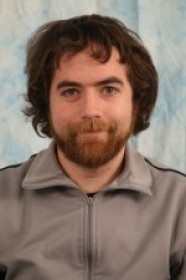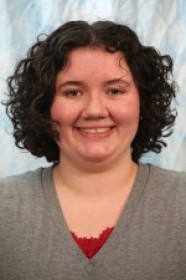Student Talks
Calibration and Characterization of Low-Cost Fine Particulate Monitors and their Effect on Individual Empowerment
Event Location: GHC 8102Abstract: Air quality has long been a major health concern for citizens around the world, and increased levels of exposure to fine particulate matter (PM2.5) has been definitively linked to serious health effects such as cardiovascular disease, respiratory illness, and increased mortality. PM2.5 is one of six attainment criteria pollutants used by [...]
Improving Prosody through Analysis by Synthesis
Event Location: GHC 6501Abstract: An iterative model-based method is proposed for improving linguistic structure, segmentation, and prosodic annotations that correspond to the delivery of each utterance as regularized across the data. For each iteration, the training utterances are resynthized according to the existing symbolic annotation. Values of various features and subgraph structures are "twiddled:" each [...]
Adaptive Motion Planning
Event Location: NSH 1305Abstract: Mobile robots are increasingly being deployed in the real world in response to a heightened demand for applications such as transportation, delivery and inspection. The motion planning systems for these robots are expected to have consistent performance across the wide range of scenarios that they encounter. While state-of-the art planners can [...]
Automatic Analysis of Facial Actions: Learning from Transductive, Supervised and Unsupervised Frameworks
Abstract Automatic analysis of facial actions (AFA) can reveal a person's emotion, intention, and physical state, and make possible a wide range of applications. To enable reliable, valid, and efficient AFA, this thesis investigates both supervised and unsupervised learning. Supervised learning for AFA is challenging, in part, because of individual differences among persons in face [...]
Measuring Human Motion in Social Interactions
Tomas Simon Carnegie Mellon University Abstract This thesis develops methods for social signal reconstruction---in particular, we measure human motion during social interactions. Compared to other work in this space, we aim to measure the entire body, from the overall body pose to subtle hand gestures and facial expressions. The key to achieving this without placing [...]
Robust and Natural Gait via Neuromuscular Control for Transfemoral Prostheses
Nitish Thatte Carnegie Mellon University February 03, 2017, Robust and Natural Gait via Neuromuscular Control for Transfemoral Prostheses, Porter Hall A19C Abstract We present work towards developing a control method for powered knee and ankle prostheses based on a neuromuscular model of human locomotion. Previous research applying neuromuscular control to simulated biped models and to [...]
Online Lidar and Vision based Ego-motion Estimation and Mapping
Ji Zhang Carnegie Mellon University Abstract In many real-world applications, ego-motion estimation and mapping must be conducted online. In the robotics world, especially, real-time motion estimates are important for control of autonomous vehicles, while online generated maps are crucial for obstacle avoidance and path planning. Further, the complete map of a traversed environment can be [...]
Creative Robotic Systems for Talent-based Learning
Event Location: GHC 4405Abstract: In recent years, the U.S. educational system has fallen short in training the technology innovators of the future. To do so, we must give students the experience of designing and creating technological artifacts, rather than relegating students to the role of technology consumers, and must provide educators with opportunities and professional [...]
The theory, implementation, and evaluation of spring mass running on ATRIAS, a bipedal robot
Event Location: NSH 3305Abstract: We expect legged robots to be highly mobile. Human walking and running can execute quick changes in speed and direction, even on non-flat ground. Indeed, analysis of simplified models shows that these quantities can be tightly controlled by adjusting the leg placement between steps, and that leg placement can also compensate [...]
Data-Driven Visual Forecasting
Event Location: GHC 4405Abstract: Understanding the temporal dimension of images is a fundamental part of computer vision. Humans are able to interpret how the entities in an image will change over time. However, it has only been relatively recently that researchers have focused on visual forecasting—getting machines to anticipate events in the visual world before [...]









